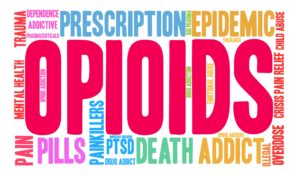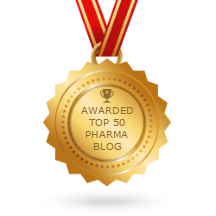by Gabriel Levitt, President, PharmacyChecker.com and Prescription Justice | Sep 13, 2017 | Drug Prices
 At the beginning of this year, Prescription Justice, the non-profit organization I founded, released an analysis showing that about 45 million Americans did not fill a prescription in 2016 due to cost. We derived that figure by looking at 2016 survey data by the Commonwealth Fund, a research organization dedicated to healthcare policy. Its international survey showed that 18% of the adult population in the U.S. did not fill a prescription due to cost. The UK’s rate was nine times lower at 2%.
At the beginning of this year, Prescription Justice, the non-profit organization I founded, released an analysis showing that about 45 million Americans did not fill a prescription in 2016 due to cost. We derived that figure by looking at 2016 survey data by the Commonwealth Fund, a research organization dedicated to healthcare policy. Its international survey showed that 18% of the adult population in the U.S. did not fill a prescription due to cost. The UK’s rate was nine times lower at 2%.
Last week, I came across new information that showed about six million Americans of Medicare age were included among the 45 million. A new cross-sectional study of Commonwealth Fund international survey data from 2014 shows the percentage of older adults, 55 and up, that do not take medication because of drug prices. People in 11 high-income countries—22,532 overall—were asked if they had gone without prescribed medications in the past year because of cost.
In the U.S., 16.8% of 1593 people said yes.
For those 65 and older the percentage was 12%.
U.S. Census data from July of 2016 shows that there are about 48 million Americans 65 and older.
That means 5.8 million Americans, 65 and older, forgo taking their meds due to cost.
For international comparison: the percentage of older people skipping medications due to prices in the UK was 3.1%. In France, it was only 1.6%.
Sadly, it was quite high in Canada and Australia: 8.3%, and 6.8%, respectively.
The academic, medical term for such medication skipping because of prices is called cost-related nonadherence (CRNA). It’s a serious public health issue, one in which Americans end up getting sicker, going to the emergency room, or dead solely because they can’t pay for medications. As we move into the season when Medicare beneficiaries pick Part D plans, we’ll continue to look at how our oldest citizens are affected by high drug prices. But it’s clear that Medicare pharmacy benefits are falling far short of what is needed. While price should not block ANYONE from essential medications, the fact that so many millions of our oldest citizens who need their prescribed meds the most are forced to go without is disgusting.
Tagged with: Commonwealth Fund, CRNA, older americans
by Gabriel Levitt, President, PharmacyChecker.com and Prescription Justice | Sep 8, 2017 | Controlled Drugs
 The Internet is the last place Americans look to when they want to get high on prescription narcotics, according to government data. One-tenth of 1% (.1%) of Americans who obtain prescription opioids for non-medical purposes (to “get high”) say that they obtain them over the Internet.
The Internet is the last place Americans look to when they want to get high on prescription narcotics, according to government data. One-tenth of 1% (.1%) of Americans who obtain prescription opioids for non-medical purposes (to “get high”) say that they obtain them over the Internet.
This data is based on the latest survey, published in 2015, by the Substance Abuse and Mental Health Services Administration (SAMHSA), which is part of the Department of Health and Human Services. Compare that to the main channels people use for prescription opiates for getting high:
50.5% from friends
22.1% from their doctors
10.9% buy them from friends
4.8% from a drug deal or other stranger
4.4% took or stole it from a friend
3.1% from more than one doctor
0.4% stole from a doctor’s office, hospital or clinic
3.6% some other way not asked in the survey
This information is important to the community of companies, organizations and consumers that support online access to safe, affordable medication and personal drug importation. Groups funded by the pharmaceutical industry use the tragedy that is the opioid crisis in America to oppose legislation and regulations that would otherwise help more Americans safely import lower-cost medication. They do so by naming the Internet the culprit for the epidemic. The data indicates that this blame is seriously misplaced. (more…)
Tagged with: opioid epidemic, SAMSHA
by Gabriel Levitt, President, PharmacyChecker.com and Prescription Justice | Aug 31, 2017 | Drug Safety
 By way of the craftiest of PR snakes, pharmaceutical companies infest the media, politicians, and consumers with the idea that if we expressly permit people to buy lower-cost medications from other countries, we break the “closed” pharmaceutical distribution system. This concept of a “closed” system is sadly overplayed and misleading.
By way of the craftiest of PR snakes, pharmaceutical companies infest the media, politicians, and consumers with the idea that if we expressly permit people to buy lower-cost medications from other countries, we break the “closed” pharmaceutical distribution system. This concept of a “closed” system is sadly overplayed and misleading.
The U.S. Food and Drug Administration (FDA) is one of the leading drug regulatory authorities, but as the pharmaceutical industry continues its propagandistic efforts against legalizing importation of lower-cost medication, the myth making has got to be called out. You’ll have to forgive me for the lengthy post: I’ve chosen to include long quotes from experts—perhaps to offset my frustrated tone—but mostly to properly inform you what we’re up against.
The fact is, you can trust the safety and efficacy of medications sold in the U.S., but NOT more so than Canada or many other countries. People are not paying attention to the perpetual lies Big Pharma regurgitates on this issue. In a follow-up post, I’m going to discuss myriad ways that the FDA is doing a much better job, but, for the moment, excuse me while I blow off sufficient “What-the-hell-is-going-on?!” steam. (more…)
Tagged with: closed, coukell, drug distribution, FDA inspections, GAO
 At the beginning of this year, Prescription Justice, the non-profit organization I founded, released an analysis showing that about 45 million Americans did not fill a prescription in 2016 due to cost. We derived that figure by looking at 2016 survey data by the Commonwealth Fund, a research organization dedicated to healthcare policy. Its international survey showed that 18% of the adult population in the U.S. did not fill a prescription due to cost. The UK’s rate was nine times lower at 2%.
At the beginning of this year, Prescription Justice, the non-profit organization I founded, released an analysis showing that about 45 million Americans did not fill a prescription in 2016 due to cost. We derived that figure by looking at 2016 survey data by the Commonwealth Fund, a research organization dedicated to healthcare policy. Its international survey showed that 18% of the adult population in the U.S. did not fill a prescription due to cost. The UK’s rate was nine times lower at 2%.



